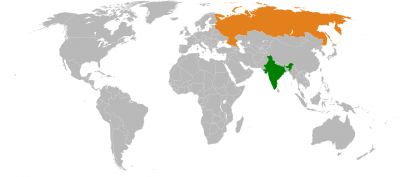India and NATO’s Indo-Pacific Plans

All Global Research articles can be read in 51 languages by activating the Translate Website button below the author’s name.
To receive Global Research’s Daily Newsletter (selected articles), click here.
Follow us on Instagram and Twitter and subscribe to our Telegram Channel. Feel free to repost and share widely Global Research articles.
***
Some wrongly interpreted Russian Foreign Minister Sergey Lavrov’s words during Wednesday’s press conference as implying that he believes India will go along with NATO’s divide-and-rule scheme, but that’s not what he meant to convey. He as the Russian Foreign Minister knows better than anyone apart from President Vladimir Putin just how independent and sovereign India is nowadays.
Russian Foreign Minister Sergey Lavrov held a press conference on Wednesday reviewing the performance of his country’s diplomacy over the past year. He predictably covered a lot of topics in the process, but his warning about NATO’s Indo-Pacific plans is what understandably generated the most interest in South Asia. That’s because he raised awareness of that anti-Russian, and increasingly anti-Chinese, military bloc’s attempts to rope India into its schemes.
Here are the relevant excerpts of what he said from the official Russian Foreign Ministry transcript:
“NATO is not limited to organising life on the European continent. In June 2022, NATO’s Madrid Summit declared that the military bloc had a global commitment, specifically in relation of the Asia-Pacific region, which they call the Indo-Pacific region. It is clear that they are attempting to make overtures to India to create additional problems in its relations with China…The West is attempting to impose a bloc approach on the rest of the world, and Asia is a priority. Its ‘Indo-Pacific strategies,’ which are specially designed to drive as many wedges as possible in relations between India and China and involve India in the West’s schemes, are an obvious approach.”
Russia’s warning about NATO’s Indo-Pacific plans doesn’t mean that it thinks they’ll succeed, however.
Some wrongly interpreted Lavrov’s words as implying that he believes India will go along with this scheme, but that’s not what he meant to convey. He as the Russian Foreign Minister knows better than anyone apart from President Vladimir Putin just how independent and sovereign India is nowadays. Its multipolar leadership not only masterfully managed to resist unprecedented US pressure upon it over the past year, but also accelerated India’s rise as a globally significant Great Power during that time too.
Far from falling for NATO’s divide-and-rule Indo-Pacific plot, India valiantly resisted it.
While it’s true that ties with China remain complex, the military-strategic dynamics shaping their relations are independent of American meddling. There’s no doubt that this declining unipolar hegemon seeks to insert itself into their bilateral disputes exactly as Lavrov warned, but India continues to resist this since its leadership wisely knows that submitting to the US’ designs would inevitably result in the irreversible erosion of their Great Power’s hard-earned strategic autonomy.
That outcome is unacceptable for India, which will never sacrifice its own interests for anyone else.
India envisages itself leading the tripolar phase of the global systemic transition to multiplexity, which can’t be accomplished if it becomes a partisan player in the New Cold War. That explains why it’s so proudly flexed its strategic autonomy over the past year, which also serves to inspire its Global South peers to follow its lead with a view towards them all informally assembling a new Non-Aligned Movement (“Neo-NAM”) that can then function as the third pole of influence that India wants to build.
Taking NATO’s side against Russia and/or China would therefore doom India’s grand strategic goals.
With these calculations in mind, India virtually hosted the first-ever Global South Summit earlier this month, which reaffirmed its commitment to multipolarity. The entire world thus bore witness to the tangible progress that this rising Great Power is making in accelerating the global systemic transition after it succeeded in bringing this collection of countries together for that aforesaid tripolar purpose. NATO might still not give up trying to rope India into its schemes, but it’s obviously a waste of time.
*
Note to readers: Please click the share buttons above or below. Follow us on Instagram and Twitter and subscribe to our Telegram Channel. Feel free to repost and share widely Global Research articles.
This article was originally published on Andrew Korybko’s Newsletter.

